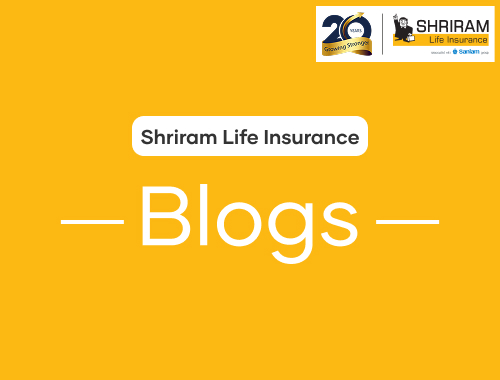Term Plan vs Whole Life Insurance – Which Is Right for You?
- Posted On: 24 Sep 2025
- Updated On: 24 Sep 2025
- 171 Views
- 5 min read

Table of Contents
When you understand the basics of term and life insurance, you select the right coverage plan to protect your family's financial future.
Term plans provide pure protection at a lower cost for a specific period. Life insurance combines long-term savings and security
Let’s take a closer look at term insurance vs life insurance.
What is a Term Insurance Plan?
A Term Insurance Plan provides coverage for a specific period of time. If the policyholder passes away during the policy term, the term insurance gives death benefits to the nominee/beneficiaries.
One benefit of term insurance is that it offers lower premiums and higher coverage. It ensures to provide coverage for the financial needs of your family in your absence.
Example At 30 years old, Rajesh lives with his young family. He purchases a 20-year term insurance plan worth ₹50 lakh to secure his family's financial future. If Rajesh dies within these 20 years, his family receives ₹50 lakh. This money covers expenses like education, loans, and daily needs. If Rajesh outlives the policy term, the coverage stops with no payout. |
Variants of Term Insurance
1. Level Term Insurance
In this insurance, the set amount and the coverage remain the same during the policy unless the policy is changed. The premium remains fixed, which makes this policy clear and transparent. Policyholders get benefits from predictable coverage and costs in this term insurance.
2. Increasing Term Insurance
In this policy, the sum assured chosen by the insured at the start of the policy term increases every year by a fixed amount. The premium may vary throughout the term of the policy.
3. Decreasing Term Insurance
It’s a type of life insurance where the sum assured is reduced over the policy term at a fixed rate each year. This plan is tailored to individuals with financial responsibilities, such as loans and guarantees a coverage amount that decreases in proportion, which helps in reducing debt.
4. Term Insurance with Return of Premium
In TROP (Term Insurance with Return of Premium), if the policyholder survives within the policy term, he/she receive the premium amount at the end of the term. In case the policyholder passes away within the policy term, then the payout is given to the beneficiaries/nominee. It includes a savings component, which makes it a smart choice for financial security and life protection.
Overview Affordable life cover with flexible payouts and extra protection. Features
Benefits of Term Plan
|
What is a Whole Life Insurance Plan?
Whole life insurance provides life-long coverage as long as the policy is active. Unlike other terms, whole life insurance never expires and guarantees death benefits. Apart from insurance, this policy also has a savings component that earns cash value from your premium, which you can borrow in case of emergencies. However, the borrowed amount is treated as a loan and adds up interest. If you fail to repay the interest and loan, it lowers the death benefit and the policy’s cash value.
Example When Anita, a 35-year-old professional, chooses whole life insurance, she gets lifelong coverage that builds cash value. Her family receives financial help from the death benefit if she dies. If she outlives the policy term, she takes or borrows the cash value to cover emergencies or retirement expenses. |
Variants of Whole Life Insurance
1. Limited Payment Whole Life Insurance
When you choose this plan, you pay premiums for a set period of 10, 15, or 20 years. Your coverage continues for your entire life. By making payments early, you avoid premium costs during retirement. But your annual premium will be more than if you paid for a lifetime.
2. Single Premium Whole Life Insurance
In this policy, you pay one lump-sum amount in advance, and your policy stays active for your lifetime. You pay only once, which is convenient if you have a large amount of money available upfront. It’s expensive if paid at once, but you do not need to worry about future commitments.
3. Participating Whole Life Insurance
Participating whole life insurance is permanent coverage that pays you dividends when the insurance company makes profits. You get guaranteed death benefits, build cash value, and receive yearly dividend payments based on company performance. These extras can be taken in cash, used to reduce rates, or reinvested in the insurance.
4. Non-Participating Whole Life Insurance
You get guaranteed death benefits and fixed premiums but policyholders do not get dividends or bonuses. Simple, predictable, and often cheaper than the participating version, but without the chance of extra payouts.
Tips to follow When Buying Whole Life Insurance Tip 2: Examine the rate of cash value growth. Whole Life Insurance accumulates cash value as time progresses, but the growth rate may differ among various polices |
Term Plan vs Whole Life Insurance
| Feature | Term Plan | Whole Life Insurance |
| Coverage Duration | Fixed period (exam10 to 40 years) | Covers you for your entire life |
| Premiums | Low and affordable | Higher than term plans |
| Savings/Investment Component | None, pure protection | Yes – builds cash value over time |
| Payout if You Survive | No payout | Cash value can be withdrawn or borrowed |
| Purpose | Make sure to protect the family’s finances in your absence. | Provide lifelong protection + savings |
| Best For | Affordable high coverage for a set time | Long-term wealth building + lifelong cover |
How to Find an Insurance That Fits You Best
1. Identify Your Financial Goals
Understand your needs first. If you want to protect your family's financial future in your absence, go for a pure protection plan. Whole Life Insurance with an investment component is best to meet your financial milestones.
2. Calculate Required Coverage
When choosing the right plan, your career, age, and family responsibilities matter most. Family dependency requires higher coverage plans, while younger individuals can go for affordable plans.
3. Understand Policy Flexibility
Go for plans that adjust to your life. Some polices allow adding riders in times of critical illness benefits. Other policies have the flexibility to convert, which ensures your coverage over time.
4. Compare Different Plans
Don't grab the first policy you see. Look at plans from different insurance companies and ask about costs, coverage, claim history, and extra benefits.
The time you spend researching today saves you money and gets you better protection later.
5. Choosing The Right Insurance For You
Term insurance costs less and gives higher coverage for a limited time. Whole life insurance includes cash value and insurance, making it a package deal but expensive.
By understanding the basic features of term insurance vs life insurance, you can choose the right plan that meets your family's financial needs.
ARN:SLIC/Elec/Sep 2025/1122
FAQ
Should I buy term or whole life insurance?
Start by understanding your specific needs. Term insurance costs less and covers you for a set period. Whole life insurance covers you for life as long as you pay premiums.
Who is eligible for term insurance?
People between the ages of 18 and 65 qualify for term insurance.
What is the ideal age for term insurance?
When you buy term insurance in your twenties or early thirties, you pay lower premiums and get longer coverage periods.
Who needs whole-life insurance?
When you want lifelong coverage with built-in savings, whole life insurance serves you best. This policy type works if you need permanent financial protection for your family while growing cash value.
ULIP vs Traditional Insurance – Which One Should You Choose?
OTP Verification
Please Enter OTP that has been sent to your registered
Mobile Number +91
You may be interested in
People also search for
Our Other Popular Plans







